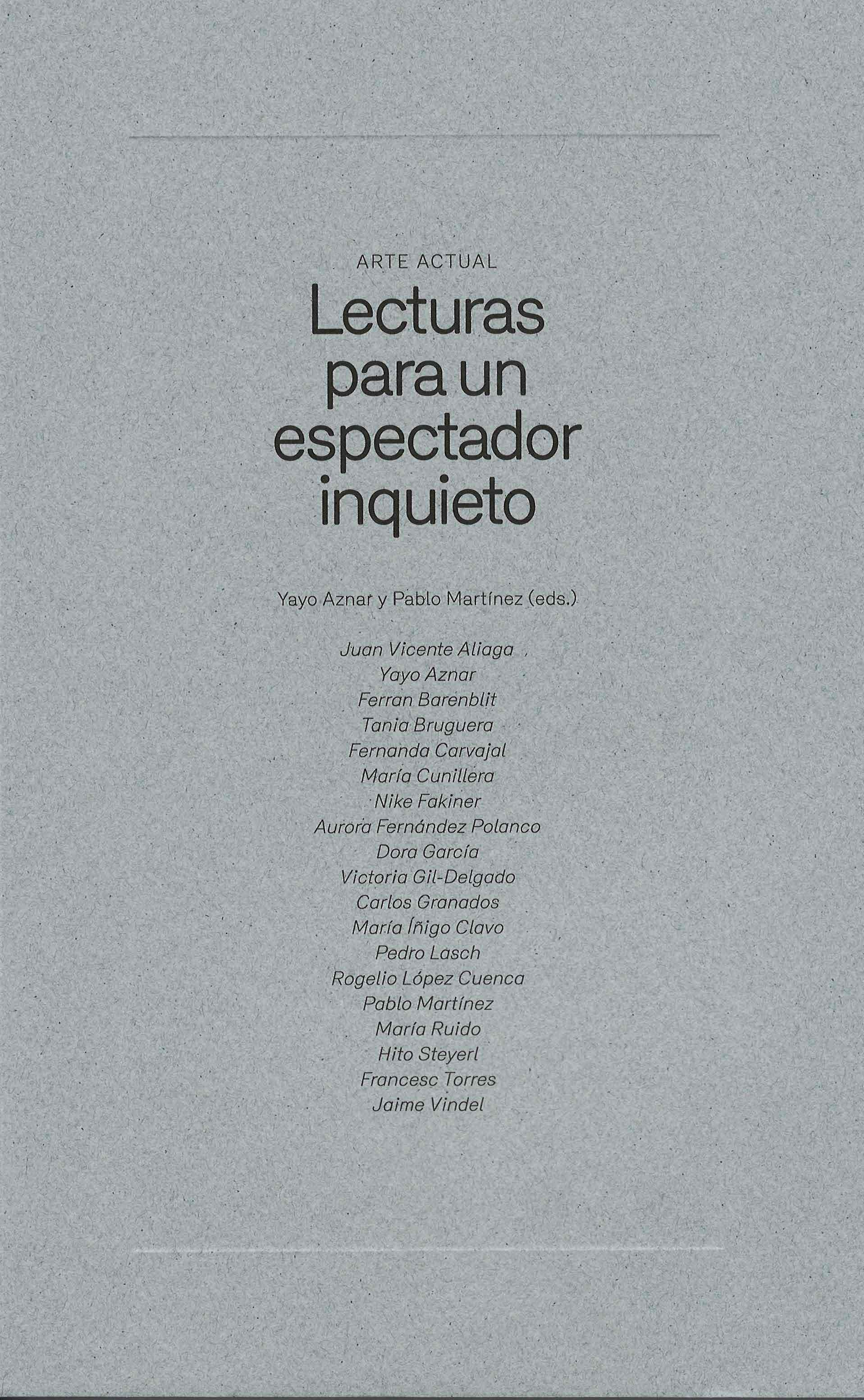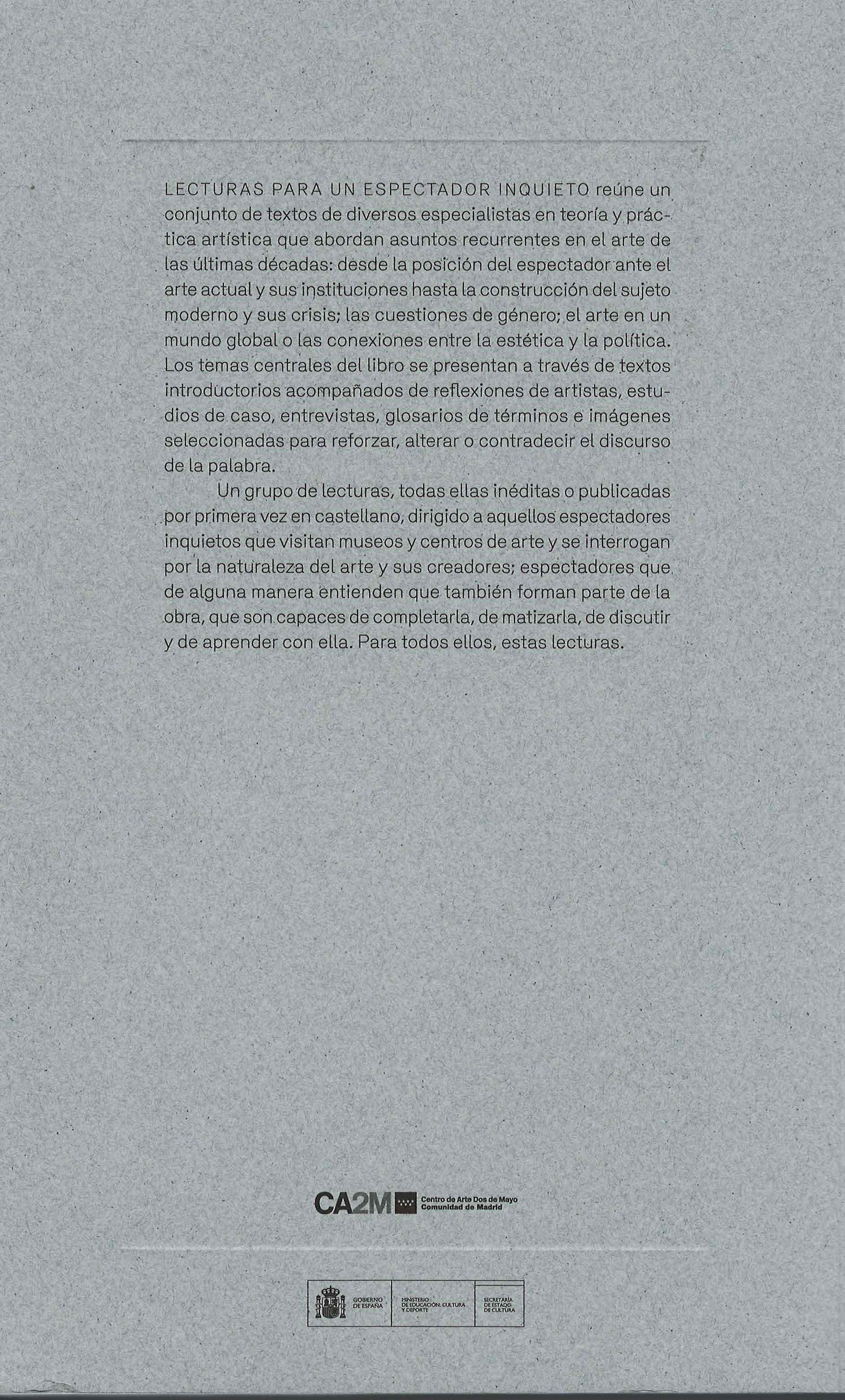Tania Bruguera
November 2012
From: Bruguera, Tania “Reflexiones sobre el Arte Útil,” ARTE ACTUAL: Lecturas para un espectador inquieto. Contributions of Juan Vicente Aliaga, Yayo Aznar, Ferran Barenblit, Tania Bruguera, Fernanda Carvajal, María Cunilera, Nike Fakiner, Aurora Fernández Polanco, Dora García, Victoria Gil-Delgado, María Íñigo Clavo, Pedro Lasch, Rogelio López Cuenca, Pablo Martínez, María Ruido, Hito Steyerl, Francesc Torres, Jaime Vindel. Ed. Yayo Aznar and Pablo Martinez. CA2M Centro de Arte Dos de Mayo, Dirección General de Bellas Artes del Libro y de Archivos. Comunidad de Madrid. November, 2012. Madrid, Spain (illust.) pp. 194 – 197.
ISBN 978-84-451-3443-6
Reflexions on Arte Útil (Useful Art)
by Tania Bruguera
The natural impulse of artists is trying to understand the things surrounding them and sharing with others the questions they make to themselves and the answers they find.
The sense of Arte Útil is to imagine, create, develop and implement something that, produced in artistic practice, offers the people a clearly beneficial result. It is art because it is the elaboration of a proposal that does not yet exist in the real world and because it is made with the hope and belief that something may be done better, even when the conditions for it to happen may not be there yet. Art is the space in which you behave as if conditions existed for making things you want to happen, happen, and as if everyone agreed with what we suggest, although it may not be like that yet: art is living the future in the present. Art is also making people believe, although we know we may have not much more that the belief itself. Art is to start practicing the future.
Arte Útil has to do with the understanding that art, only as a proposal, is not enough now. Arte Útil goes from the state of proposal to that of application in reality. It has to do with understanding that proposals coming from art must give their next step and be applied, must leave the sphere of what is unattainable, of the desired impossibility, to be part of what exists, of the real and functional sphere: to be a feasible utopia. Although Arte Útil may be like a pilot or beta program, where participants may experience how it feels to live in the world that is being proposed, it must be launched as something real. It should be shown/shared with those who may make it work in a long term format, that is, the people who derive benefits from the proposal and who may take it to a more permanent state or existence. Art made as Arte Útil does not have a planned obsolescence; on the contrary, it is a proposal others may retake and continue without subsequent intervention of the artist. Artists suggest its potential life: some projects are imagined as short and specific; in others there is the desire of a longer repercussion in the lives of people and be appropriated by society as a whole. Arte Útil has nothing to do with consumption, but with making something happen.
Arte Útil is transforming affection into effectiveness.
For Arte Útil, failure is not a possibility. If the project fails, it is not Arte Útil. Artists have the challenge of finding forms in which their proposal may actually work; this is not impossible to achieve. So, the means through which art is made do not depend on a capricious ideal of the artist, but on the limits imposed by what can really be achieved and up to what point the reality of what has been dreamed can be pushed. Therefore, the limits of a Arte Útil project are determined by the relationship with the people for whom it is made and the transformations in the conditions within which the work is made. The perfect moment appears when the project is already in movement, when the people for whom it was made understand it, when they expropriate it from the artist and make it theirs. Arte Útil is involved in the life of people and it is to be expected that it becomes part of it.
Arte Útil has no relationship with a view falsely seeing what is good in everything; it rather believes in the possibility of the people to grow. Artists doing social art are not shamans, magicians, healers, saints or mommies. They are nearer to teachers, negotiators, behavior builders and social structures. Arte Útil functions directly with/in reality. Arte Útil has a different society in mind.
Arte Útil is a form of practicing social art. It is a socially consistent (artistic) material which functions as an entry point for the audience. With excessive frequency we hear about the barrier existing between the work of art and the non-informed audience for which access to the work is impossible. The usefulness of the work for the audience is, from my point of view, the key to solve this barrier of communication and interest by the non-informed/non-initiated audience in contemporary art. It is a displacement of the use of resources as metaphors, allegories, and others; it is an entry to understand the idea of the work by using usefulness as a system to interpret and appreciate the work.
If you work in Arte Útil, what can be more gratifying than to see your idea incorporated to the daily life of the people? Or to the social program of a city? Or to nuances in the vocabulary of the individuals? I believe this is the natural place for the works of Arte Útil which reach the higher level of popularity and effectiveness. Just as images based on visual art at times live like part of shower curtains, tea cups or tee shirts, for socially committed art, popular distribution should be society itself, civic institutions, civic behavior, the daily life of the people. Arte Útil should be part of everyday life; it should be a daily exercise in creativity.

